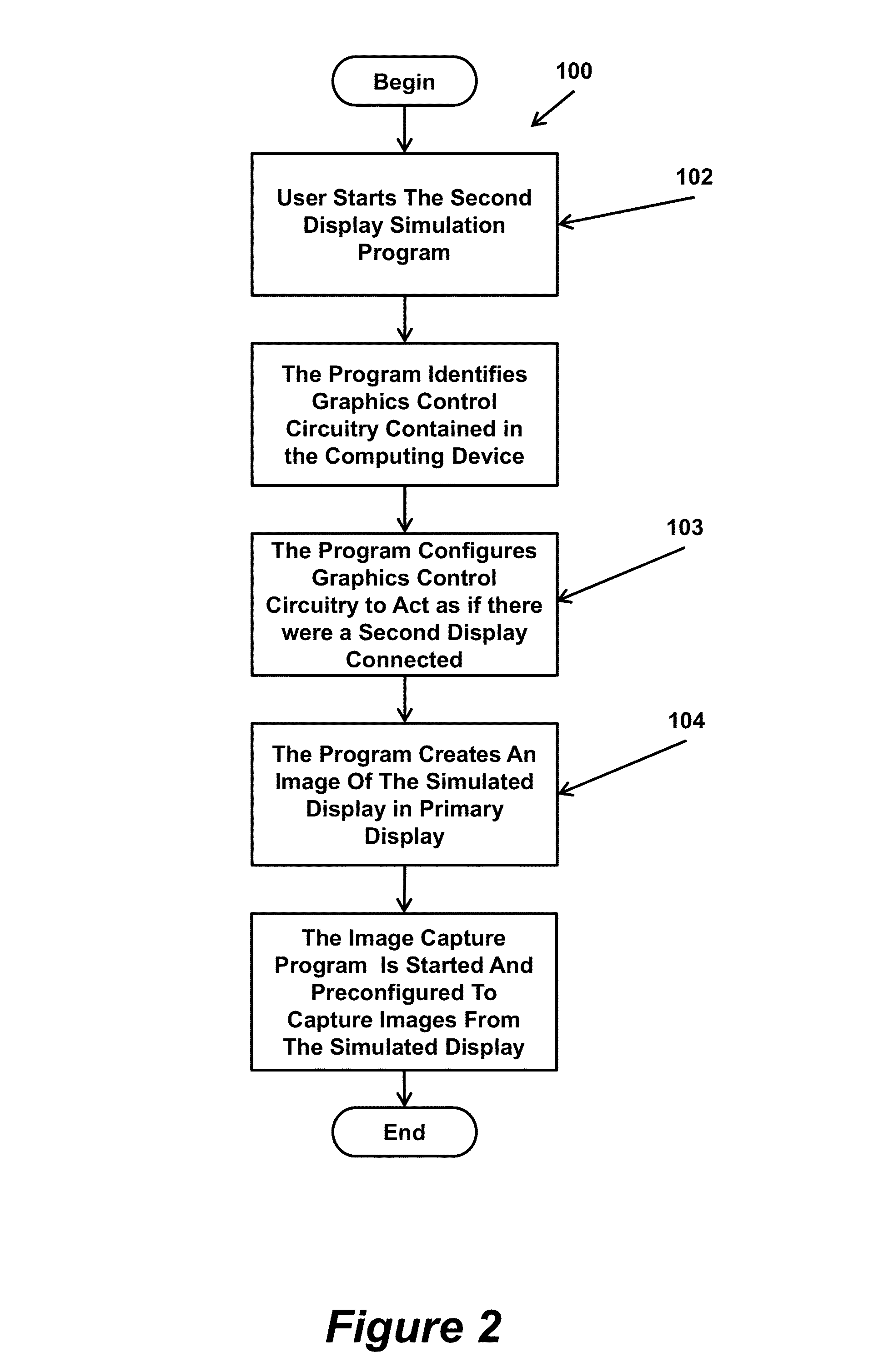Creating presentations by capturing content of a simulated second monitor
a technology of a second monitor and a presentation is applied in the field of creating presentations by capturing content of a simulated second monitor, which can solve the problems of time-consuming and difficult changes and then generating illustrations, inability to see controls or notes, and difficulty in creating a presentation for later use in an environment, so as to improve the effectiveness of instructional materials such as classroom, business and other presentations
- Summary
- Abstract
- Description
- Claims
- Application Information
AI Technical Summary
Benefits of technology
Problems solved by technology
Method used
Image
Examples
Embodiment Construction
)
[0025]FIG. 1 is a graphic block diagram showing generally a personal computer 10, which depicts a programmatic implementation of the invention. In an embodiment of the present invention, the computer may comprise a processor 12, keyboard 14, a pointing device such as a mouse 16, computer storage (storage drive) 18, a computer operating system 20, graphics control circuitry (the graphics card) that may be connected to two display devices 22, and a computer display monitor 24. Stored content or content otherwise received on a first computer device is virtually displayed as if on a secondary display, but the secondary display is not actually present. Images are captured using the process of the present invention, for display on the secondary display, without the secondary display actually being present. In this way, the captured images that form the presentation may be assembled with one computing and display device as if a secondary display was present and showing the images at that ...
PUM
 Login to View More
Login to View More Abstract
Description
Claims
Application Information
 Login to View More
Login to View More - R&D
- Intellectual Property
- Life Sciences
- Materials
- Tech Scout
- Unparalleled Data Quality
- Higher Quality Content
- 60% Fewer Hallucinations
Browse by: Latest US Patents, China's latest patents, Technical Efficacy Thesaurus, Application Domain, Technology Topic, Popular Technical Reports.
© 2025 PatSnap. All rights reserved.Legal|Privacy policy|Modern Slavery Act Transparency Statement|Sitemap|About US| Contact US: help@patsnap.com



